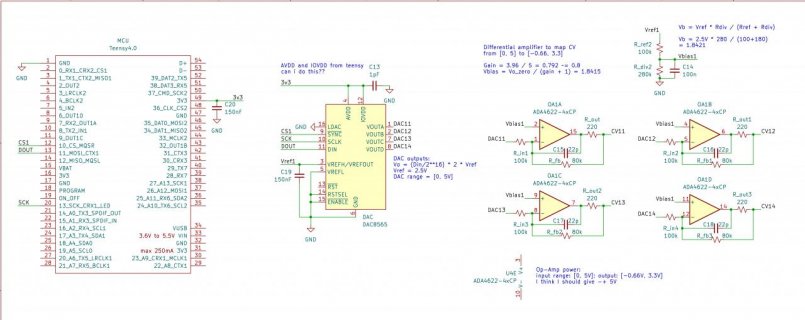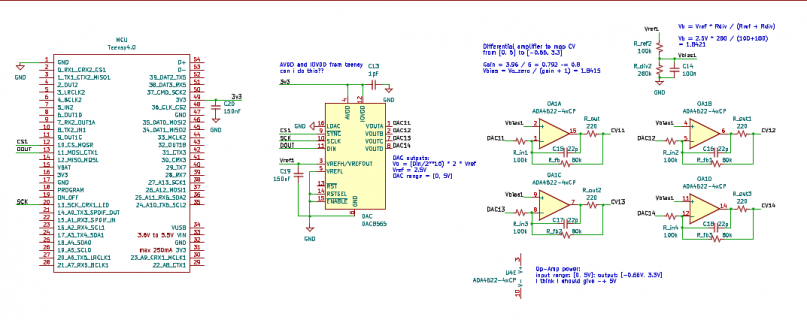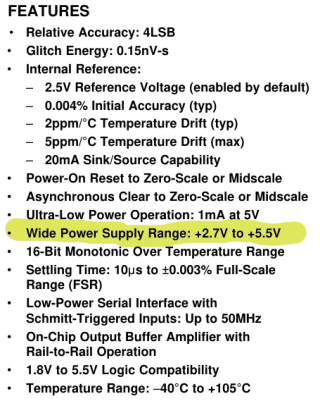Hello!
I'm starting a project in which I need 16 CV out channels, with a teensy 4.0. I was thinking about using two PCM1681 DACs, and I have a few preliminary questions:
1. Any comment or advice about components or design is super welcome!
2. Shall I use the two I2S ports on the teensy to communicate with DACs? In this case shall I make a class that does what i2s2 is to i2s, but for i2s_oct, or is there a simpler method?
3. Or shall I use AudioOutputTDM? In this case can I use any PWM pin to send data to DACs data ports?
Thanks! I come from software development, and although I have made several electronics projects with teensy for "control data", this is my first time with analogue audio.
If anyone is interested in more context about the project, it's a digitally-controlled analogue no-input mixer: I want to send OSC over serial to teensy to generate control voltage for VCAs in a matrix mixer. The mixer has 2 channels, each with a 3-band eq, that feedback into each other and get mixed into a main bus, which also feedbacks into each channel. Each channel also has an external insert. So there would be 8 cvs for each channel: insert, fb_main, fb_1, fb_2, eq_l, eq_m, eq_h, vol. Thus, the requirement for 16 cv outs.
Thanks to anyone who would like to help me kickstarting this!
I'm starting a project in which I need 16 CV out channels, with a teensy 4.0. I was thinking about using two PCM1681 DACs, and I have a few preliminary questions:
1. Any comment or advice about components or design is super welcome!
2. Shall I use the two I2S ports on the teensy to communicate with DACs? In this case shall I make a class that does what i2s2 is to i2s, but for i2s_oct, or is there a simpler method?
3. Or shall I use AudioOutputTDM? In this case can I use any PWM pin to send data to DACs data ports?
Thanks! I come from software development, and although I have made several electronics projects with teensy for "control data", this is my first time with analogue audio.
If anyone is interested in more context about the project, it's a digitally-controlled analogue no-input mixer: I want to send OSC over serial to teensy to generate control voltage for VCAs in a matrix mixer. The mixer has 2 channels, each with a 3-band eq, that feedback into each other and get mixed into a main bus, which also feedbacks into each channel. Each channel also has an external insert. So there would be 8 cvs for each channel: insert, fb_main, fb_1, fb_2, eq_l, eq_m, eq_h, vol. Thus, the requirement for 16 cv outs.
Thanks to anyone who would like to help me kickstarting this!





